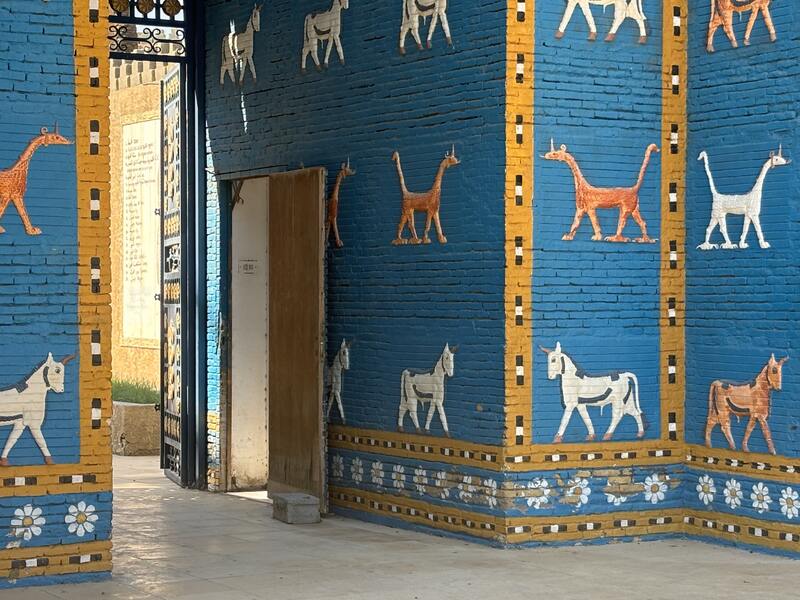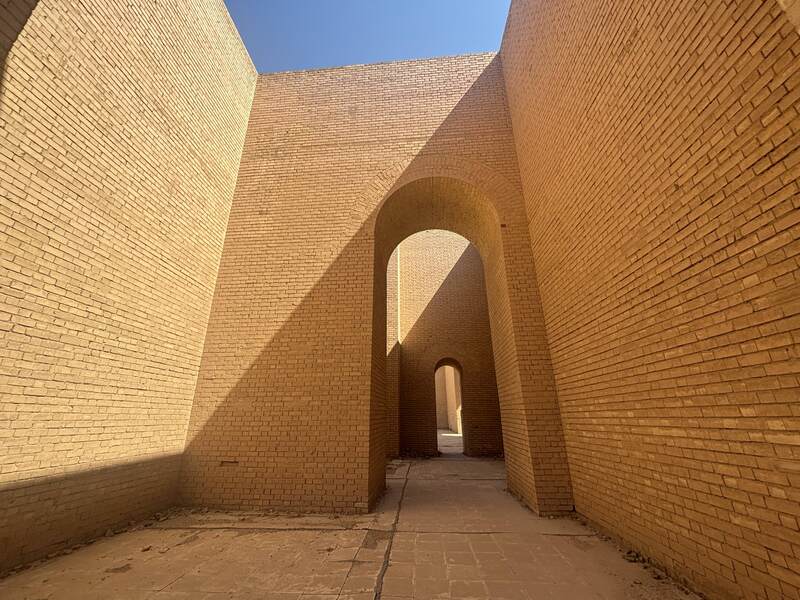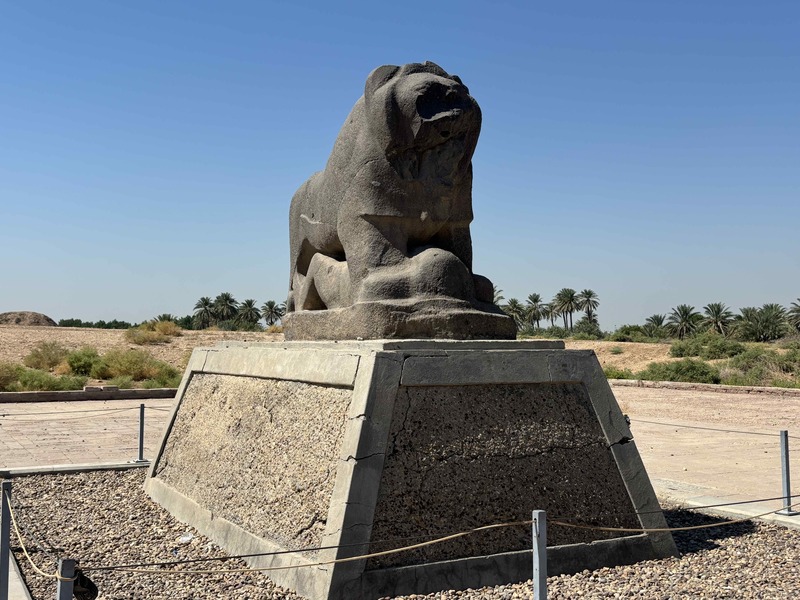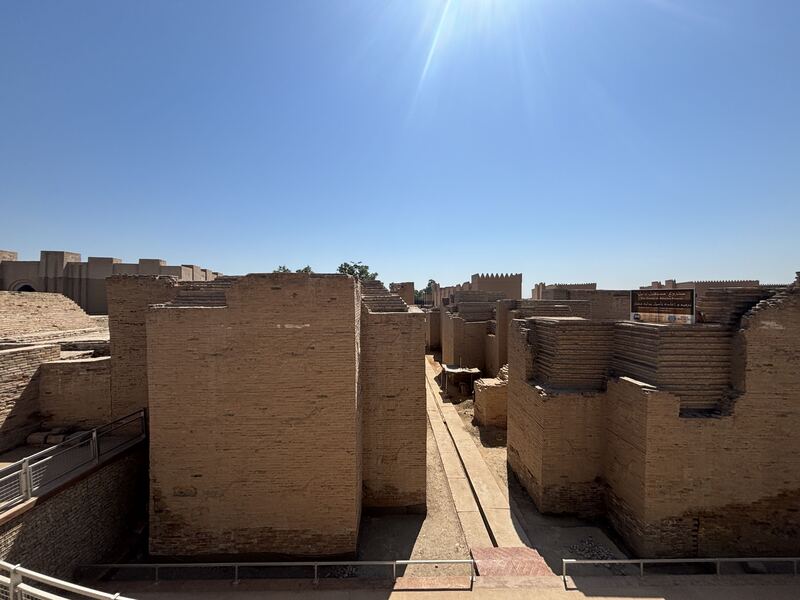The ancient city of Babylon is one of the most famous places in human history.
The ancient city of Babylon is one of the most famous places in human history.
But today, Babylon looks a lot different to what it may once have been...
Once a bustling metropolis in ancient Mesopotamia (now known as modern-day Iraq), it was truly the heart of an empire.
A centre of science and art, and home to one of the Seven Wonders of the Ancient World. The legendary Hanging Gardens of Babylon.
Today, it’s largely empty aside from the few tourists who visit every year.
And the hanging gardens of Babylon?
Certainly gardens no more... if they ever existed in the first place.
Located about 85 kilometres south of Baghdad, Babylon is now a vast archaeological site.
We take a look at a short history of Babylon and, what's it like to visit Babylon in Iraq today.
Where Is Babylon?
A Short History of Ancient Babylon
The Ishtar Gate: Babylon’s Most Famous Entrance
The Hanging Gardens of Babylon
What Was Life Like in Babylon?
Visiting Babylon Today

Where Is Babylon?
Babylon stood on the Euphrates River, in what is now central Iraq.
Its strategic location helped turn it into what it became.
Sat between the Tigris and Euphrates, it made it a powerful trading city.
A Short History of Ancient Babylon
We say short here because it really has to be a short history, lest we write an entire website on Babylon.
This area of Iraq is known as the ‘cradle of civilisation’. And Babylon rose to fame as one of the most important cities of the ancient world.
It has a pretty fair amount of history.
The name Babylon comes from the Akkadian Babili, which means Gate of the Gods”.
2300 BCE
The first settlements in Babylon date back to around 2300 BCE.
1700 BCE
The city became truly significant during the reign of King Hammurabi in the 18th century BCE.
Hammurabi is best known for creating one of the earliest written legal code.
500 BCE
Babylon reached its peak in the 6th century BCE during the reign of King Nebuchadnezzar II.
Under his rule, the city really thrived and made a name for itself as a place of magnificent architecture and a place of significance in terms of religion and power.
Massive temples, thick city walls, and the stunning Ishtar Gate all helped make Babylon a symbol of imperial might around this time.
575 BCE
The famous Ishtar Gate was built (see below).
539 BCE
Babylon eventually fell to Cyrus the Great of Persia in 539 BCE.
323 BCE
Later, it was ruled by Alexander the Great, who died there in 323 BCE.
323 BCE onwards…
Alexander the Great had planned to make Babylon the eastern capital before he died there (32). But, after his death, the city slowly declined. Eventually, it was abandoned.
Today
Saddam Hussein actually tried to rebuild Babylon in the 1980s, placing modern bricks with his name on top of ancient ruins.
Today, the ancient city of Babylon stands unassuming on the side of a road in Iraq, with little else around.
Aside, of course, from Saddam Hussein’s Palace, which stands tall on a hill, overlooking Babylon and the location of the Hanging Gardens.

The Ishtar Gate: Babylon’s Most Famous Entrance
The Ishtar Gate is one of the most iconic structures from ancient Babylon. Built by Nebuchadnezzar II, it was the eighth gate to the inner city.
It was dedicated to Ishtar, the goddess of love and war.
It’s the iconic large rectangle gate made from brilliant blue bricks. The gate was decorated with images of dragons, lions, and bulls in yellow contrast against the strong blue.
These are all sacred animals connected to Babylonian gods.
In the past, it was once part of a grand procession route used during religious festivals.
Interestingly enough, when visiting Iraq and visiting Babylon today, the Ishtar Gate you will see on the entrance to Babylon, is a reconstruction.
The original Ishtar Gate is in the Pergamon Museum in Berlin. The original bricks from the Ishtar Gate still have inscriptions from Nebuchadnezzar praising his gods.

The Hanging Gardens of Babylon
The Hanging Gardens of Babylon are one of the most mysterious landmarks in ancient history.
Described as a terraced garden filled with exotic plants, trees, and flowing waterfalls, the gardens were said to be built by Nebuchadnezzar II for his wife, who missed the green hills of her homeland.
But here's the twist: no one knows if they really existed.
Much like the Garden of Eden and Adam’s Tree, finding the proof and evidence isn’t easy.
There are no definitive archaeological remains, and some historians believe the gardens might have been located in Nineveh instead.
Still, the myth of the Hanging Gardens in Iraq lives on.
What Was Life Like in Babylon?
Although we might not be able to answer many questions on the Hanging Gardens, Babylon in general has a lot of facts surrounding it.
Ancient Babylon was a sophisticated city.
Babylon Infrastructure
It had paved roads, public buildings, canals, and an organised legal system.
Babylon Education
The Babylonians excelled in astronomy, mathematics, and literature. They divided the hour into 60 minutes and the circle into 360 degrees.
In fact, the Babylonians invented a form of early trigonometry long before the Greeks did.
They kept records of eclipses, planetary movements, and omens.
Something, you’ll probably notice, that we still use today.
Religion in Babylon
The city also had a vibrant religious life.
Babylons main temple, the Esagila, was dedicated to Marduk, the chief god. The nearby
Etemenanki ziggurat may have inspired the Biblical story of the Tower of Babel.
Yes - that story about the creation of human languages.
Markets sold spices, textiles, and wine. Musicians played lyres and drums. Priests tracked the stars, and scribes wrote on clay tablets.
Babylon was lively. Noisy. Full of life.
Visiting Babylon Today
You can visit the ruins of the Ancient City of Babylon in Iraq today. The site includes parts of the Ishtar Gate reconstruction, palace foundations, ancient walls, and a museum.
Although past construction efforts caused some damage, restoration and conservation projects are now underway.
It takes around 1-2 hours to visit but more if you want to take your time and really explore.
You should bear in mind not to walk over current archaeological excavation areas in order to help preservation efforts.
But remember: no visit to Babylon is complete without singing ‘Rivers of Babylon’ on the way.
